Defining a future-forward experience for Intel's Edge Platform
The challenge
It started with an email from the VP of Go-to-Market: a screenshot from an analyst presentation and a single paragraph about building a developer engagement platform.
That was it - a screenshot and a paragraph.
Beneath this loose brief, developers faced a broken experience with disconnected websites, inconsistent interfaces, and fragmented workflows that prevented Intel from competing in commercial software and blocked revenue growth targets.
My role
User Experience Architect, User Experience Director.
I led the strategy and experience vision definition from initial idea to detailed roadmap, guiding cross-functional teams through executive workshops, concept development, future trends research, and 5-year strategic planning with resource requirements.
Outcomes and impact
Created a vision for an AI-powered developer platform that secured executive buy-in and projected support for over $1 billion in software revenue.
Secured executive approval from the Network and Edge CVP/GM and the Chief Marketing Officer for a 5-year strategic plan targeting $1B+ software revenue, cross-organization initiative spanning multiple Intel divisions, and recognition as potential model for Intel's software strategy.
Everyone agrees. With what?
Data-backed design principles help convey rationale behind the concept
Creating the Edge Platform Guide
Based on these insights, we pivoted our concept direction. The core vision became the "Edge Platform Guide," an AI-powered feature acting as a trusted teammate for developers and customers, allowing users to:
- Describe problems in natural language
- Receive custom-guided learning paths tailored to specific goals
- Get step-by-step guidance within the context of tasks
- Access recommendations based on Intel's unique expertise
A model for software strategy and developer engagement
Building organization-wide support
To engage product teams who owned individual Edge Platform components, I ran input sessions using the "I Like, I Wish, I Wonder" framework. This structured approach gathered diverse perspectives and built initial buy-in across the organization.
I collaborated with managers, Finance, and Operations to translate our vision into a concrete 5-year plan with necessary investments. We connected our work with existing Intel-wide projects for software business transformation and future web experiences, resulting in a cross-organization initiative.
Impact and outcomes
The vision gained executive approval and became a model for Intel's software go-to-market strategy with projected business impact supporting over $1 billion in software revenue through accelerated developer adoption.
While later corporate strategy changes prevented implementation, achieving this level of strategic alignment for an innovative multi-year vision in a large organization was a significant accomplishment.
What I learned
- Start with leadership alignment: no vision succeeds without clarity and executive buy-in from the beginning.
- Lean on research-driven innovation beyond current solutions: industry parity isn't competitive advantage, especially in fast-moving tech markets.
- Show and tell: make the vision clear with prototypes, presentations, storyboards.
- Employ structured stakeholder engagement: frameworks like "I Like, I Wish, I Wonder" direct feedback and build shared ownership across teams.
- Translate vision into concrete plans: executives need investment details, timelines, and clear resource requirements to make decisions. Teams need a breakdown of the path and evolving success metrics to deliver the experience vision.
Defining a future-forward experience for Intel's Edge Platform
The challenge
It started with an email from the VP of Go-to-Market: a screenshot from an analyst presentation and a single paragraph about building a developer engagement platform.
That was it - a screenshot and a paragraph.
Beneath this loose brief, developers faced a broken experience with disconnected websites, inconsistent interfaces, and fragmented workflows that prevented Intel from competing in commercial software and blocked revenue growth targets.
My role
User Experience Architect, User Experience Director.
I led the strategy and experience vision definition from initial idea to detailed roadmap, guiding cross-functional teams through executive workshops, concept development, future trends research, and 5-year strategic planning with resource requirements.
Outcomes and impact
Created a vision for an AI-powered developer platform that secured executive buy-in and projected support for over $1 billion in software revenue.
Secured executive approval from the Network and Edge CVP/GM and the Chief Marketing Officer for a 5-year strategic plan targeting $1B+ software revenue, cross-organization initiative spanning multiple Intel divisions, and recognition as potential model for Intel's software strategy.
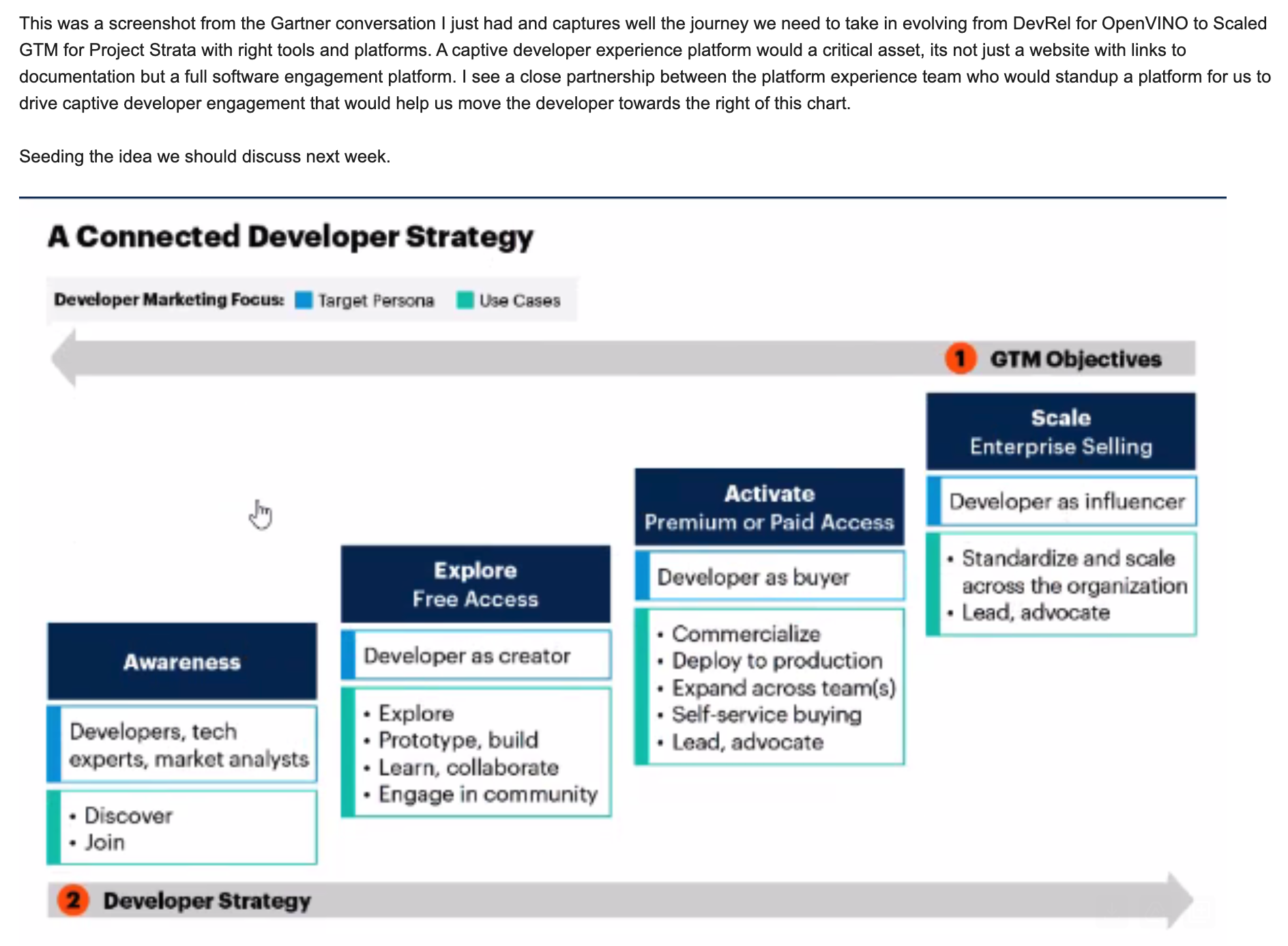
The email that triggered the experience vision definition work, proposing the need for a unified experience that connected developer and GTM strategies.
Everyone agrees. With what?
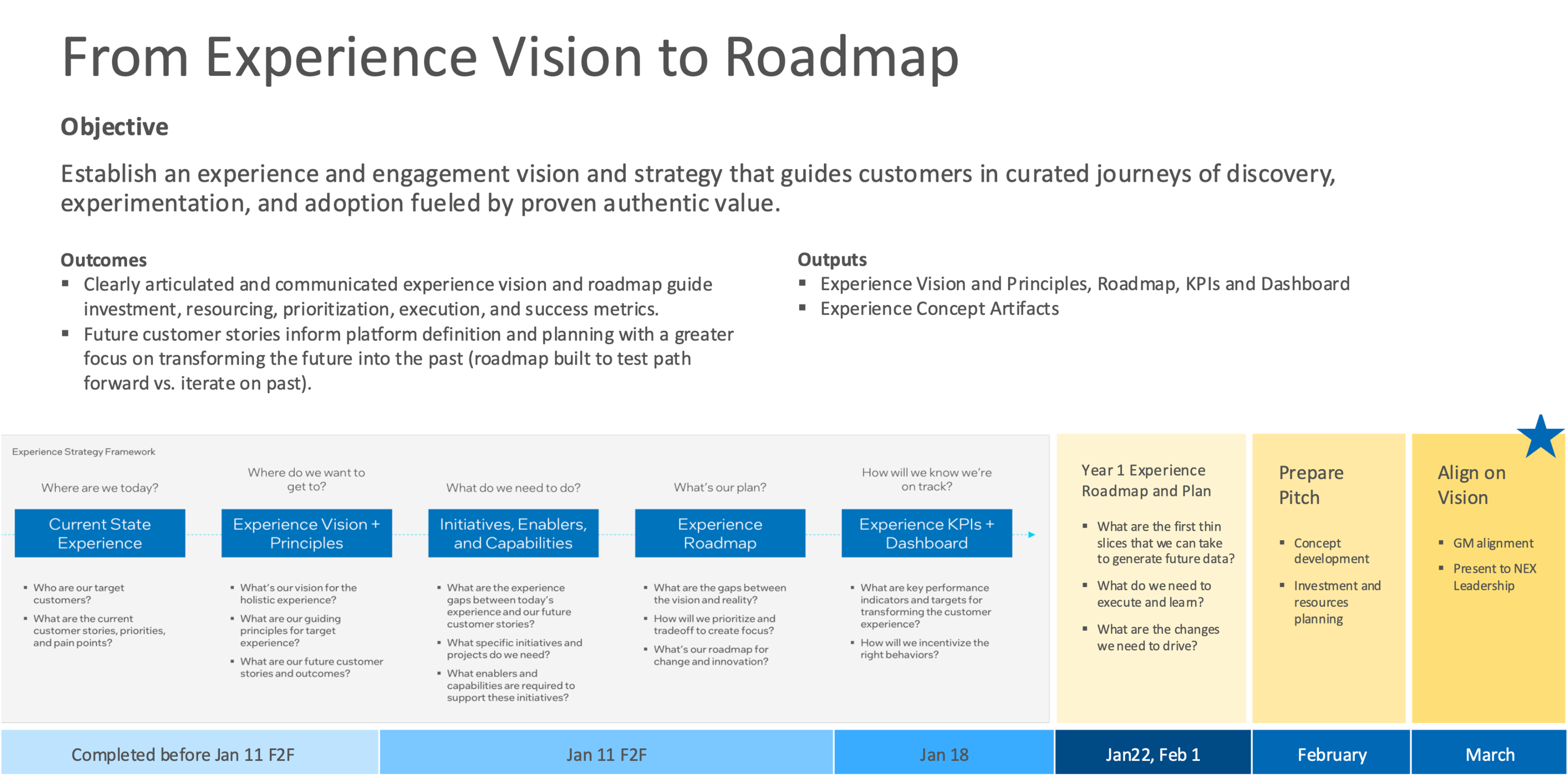
The structured approach I applied to driving executive alignment on vision, outcomes, and KPIs, while communicating timelines and expected outcomes at each stage.
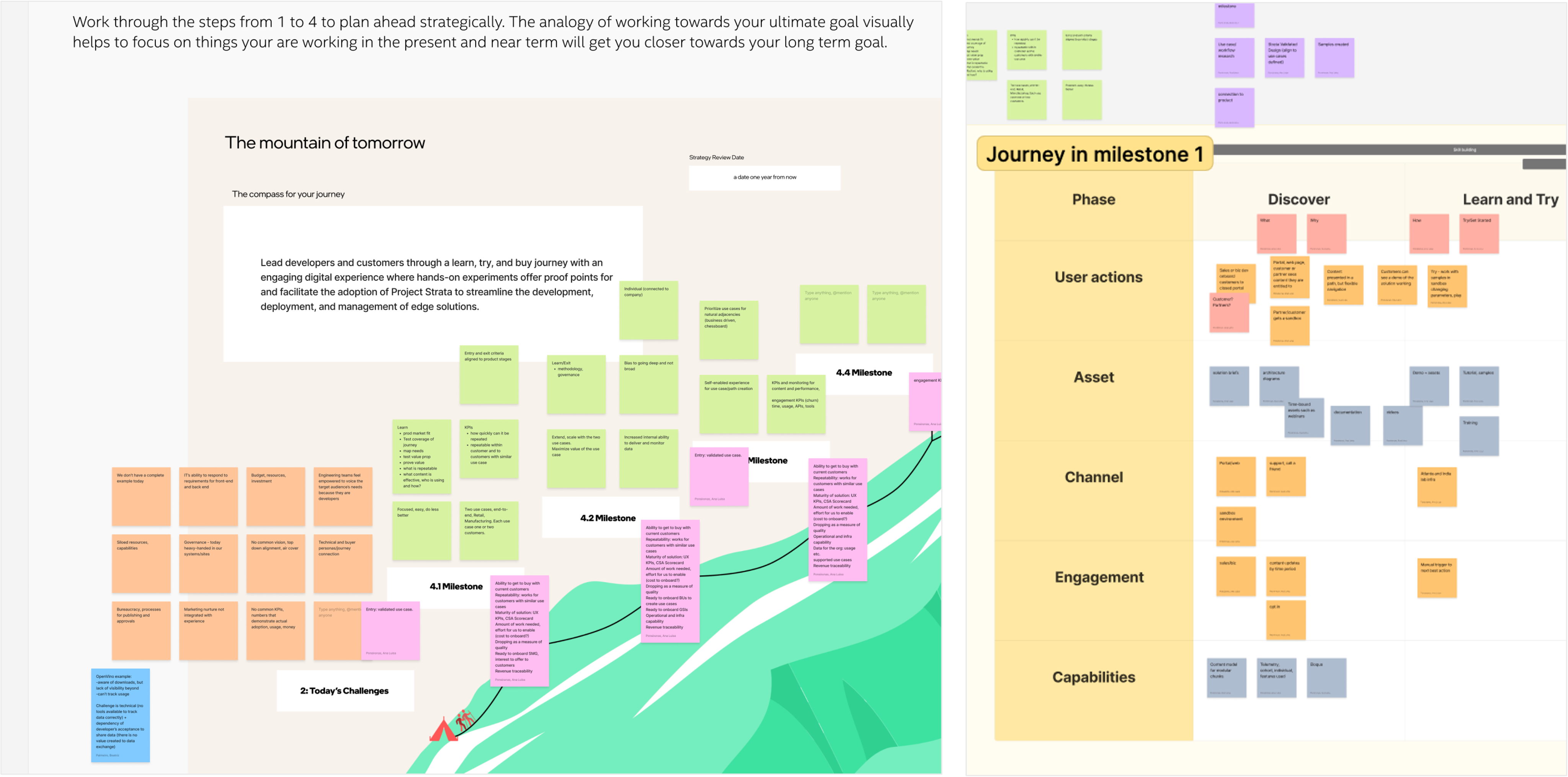
During two months, I led one full-day workshop and weekly one-hour working sessions with the executives, using design thinking and strategy definition frameworks to promote a shared understanding of the goals and challenges.
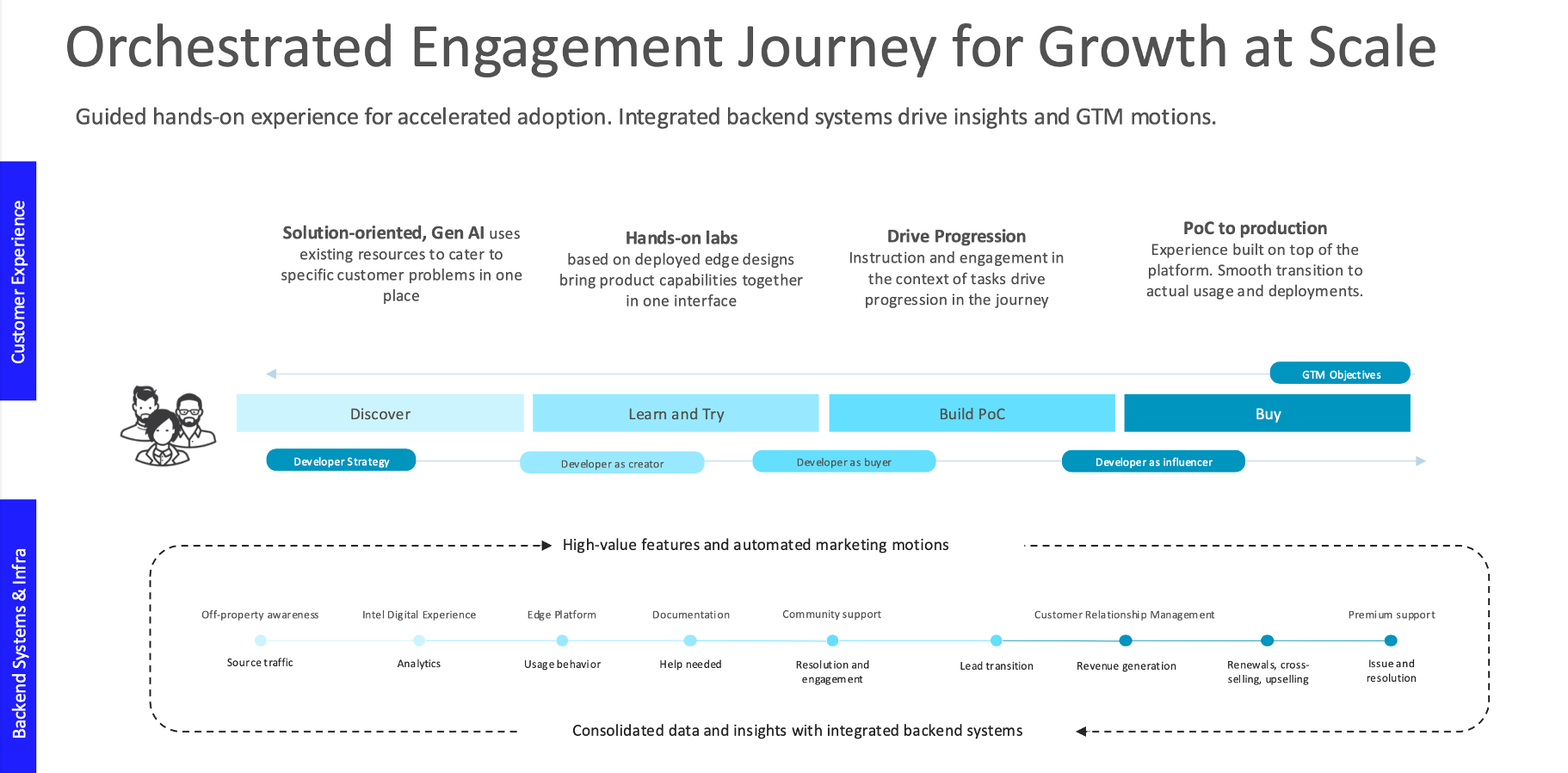
After each session, I worked to synthesize insights and direction, seeking targeted feedback to ensure most of the iteration and refinement was done before the next group meeting. This allowed us to keep the pace.
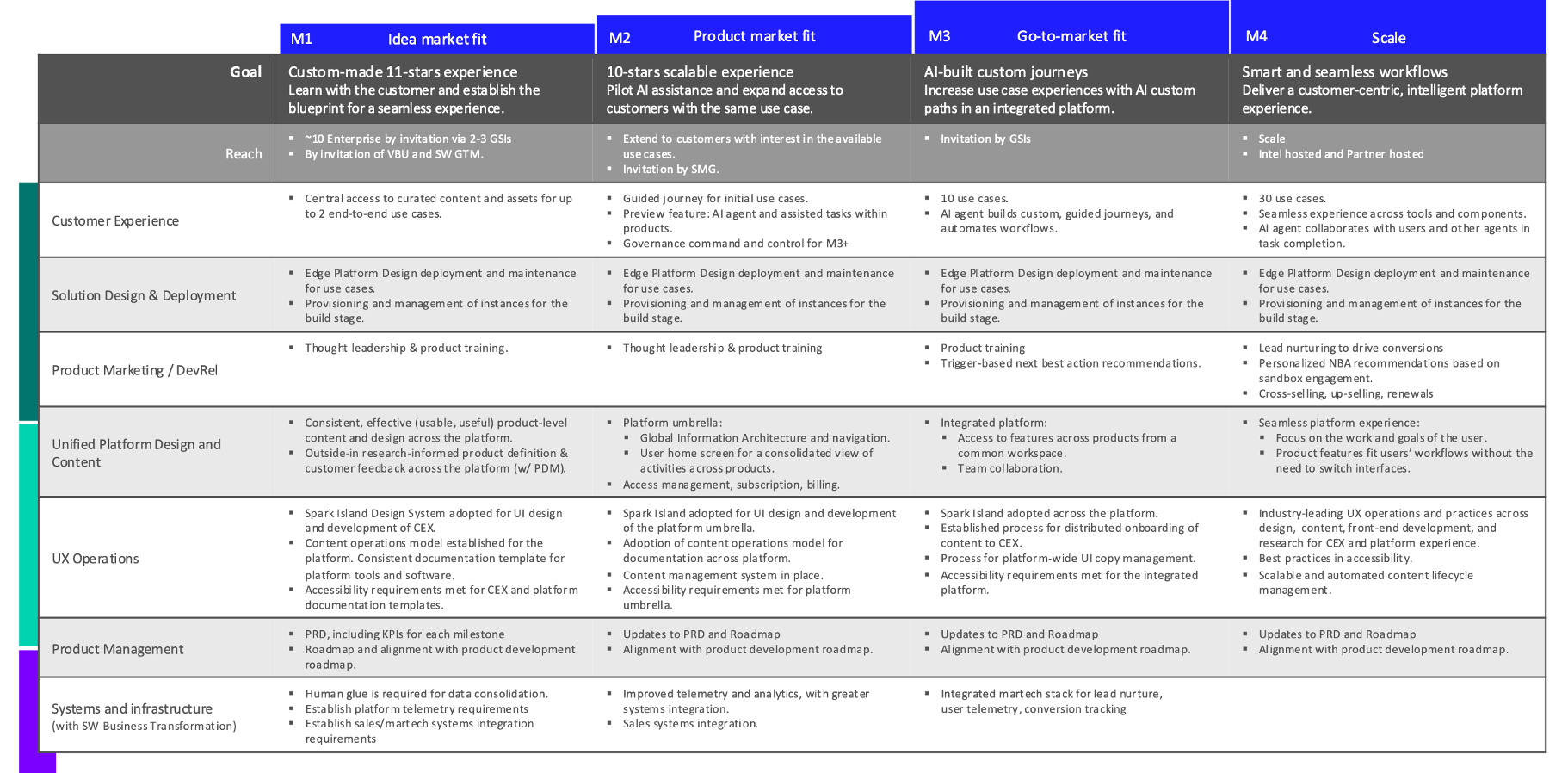
I used the expectations and concerns surfaced in the Mountain of Tomorrow exercise to frame the capabilities and the evolution of the experience at each milestone and worked with stakeholders across functions to map deliverables.
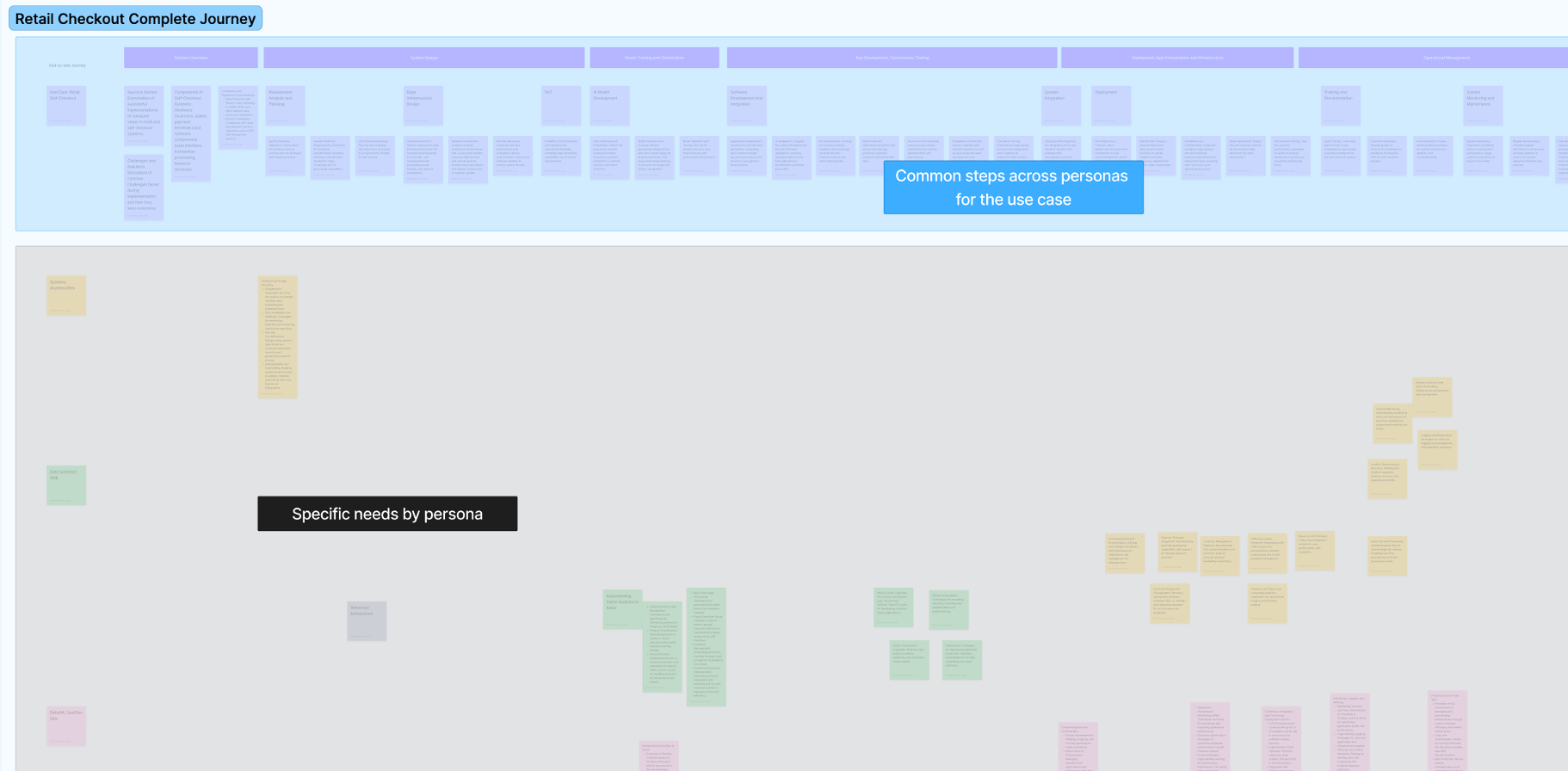
Product research and industry surveys showed how hard it was for development teams to make sense of when to use a tool and weather tools are compatible. We mapped journeys and jobs-to-be-done to shift the focus from delivering product features to providing guided end-to-end use cases.
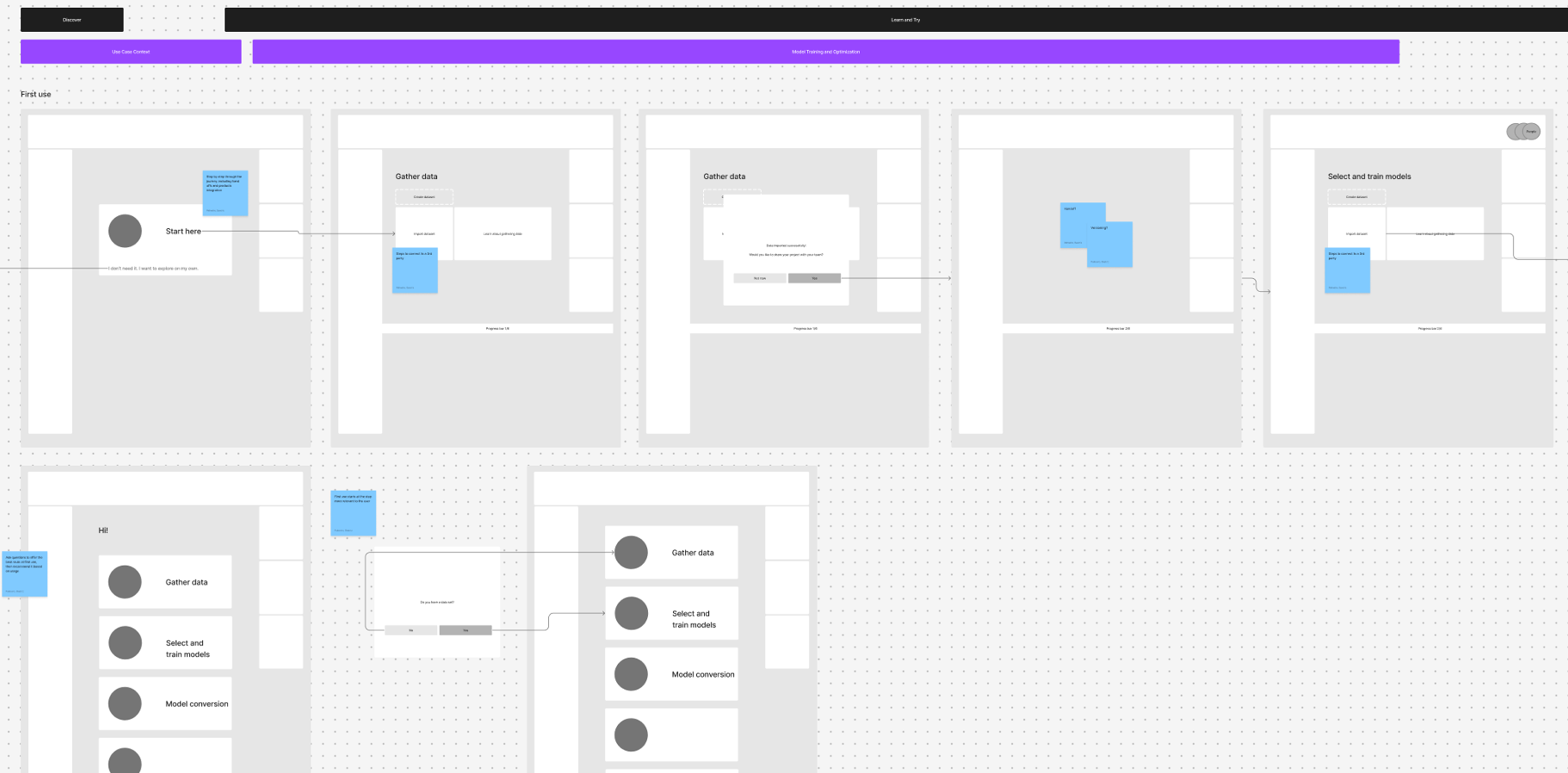
Our first few concepts and low-fidelity flows mostly focused on creating a cohesive interaction layer for multi-persona guided journeys across products, with an engagement strategy based on current industry best practices for product-led growth.
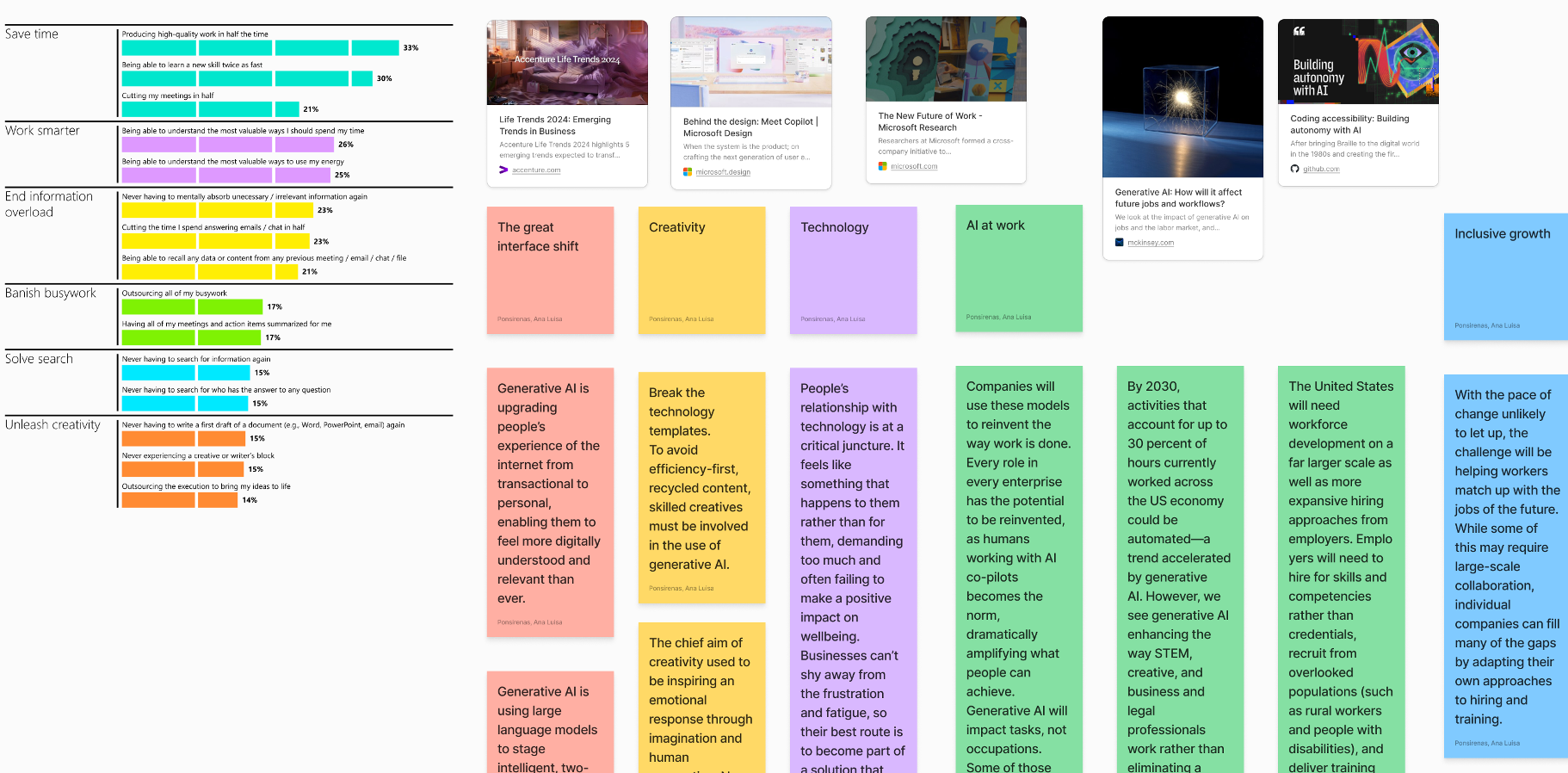
Stop and think again. What does the future of work look like? What are expected behavior changes? Taking time to better understand future trends led us to connect with R&D initiatives at Intel and develop a forward-looking concept.
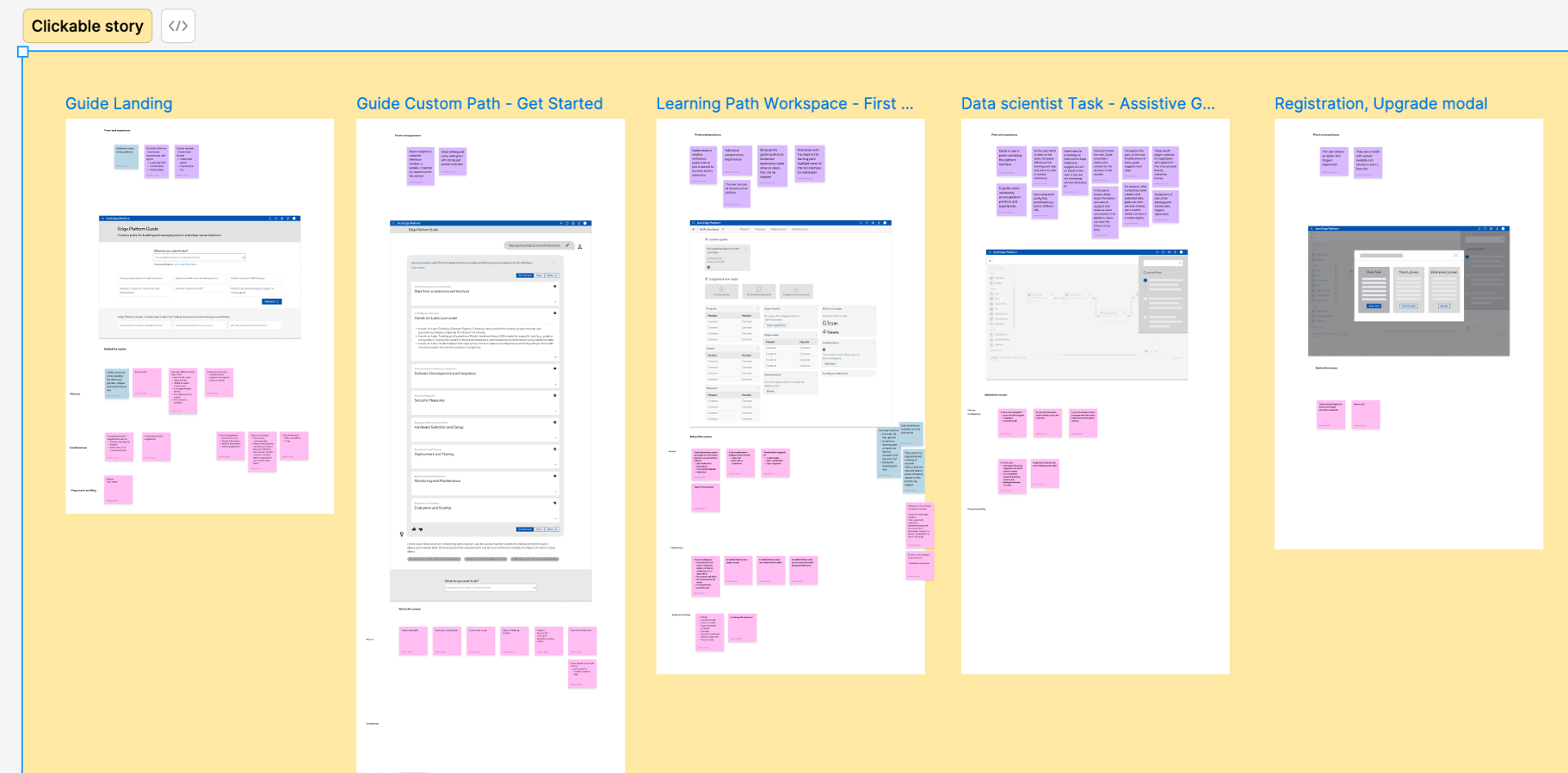
The first low-fidelity flow that helped us work through what it meant to have AI assisted workflows in the development of edge applications and how an AI agent could play the role of your personal Intel expert.
Data-backed design principles help convey rationale behind the concept
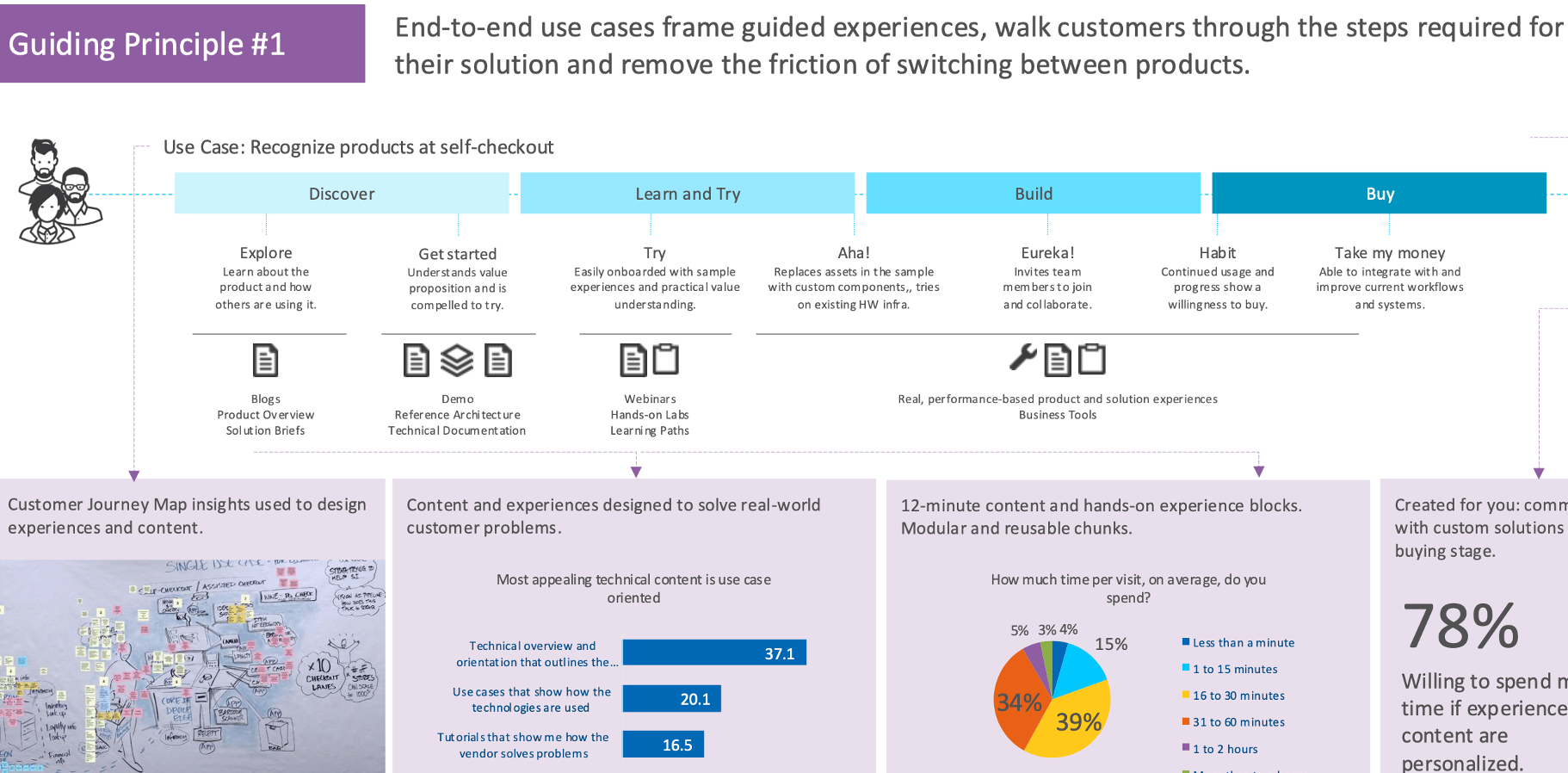
Customer-centric: End-to-end use cases frame guided experiences, walk customers through the steps required for their solution and remove the friction of switching between products.
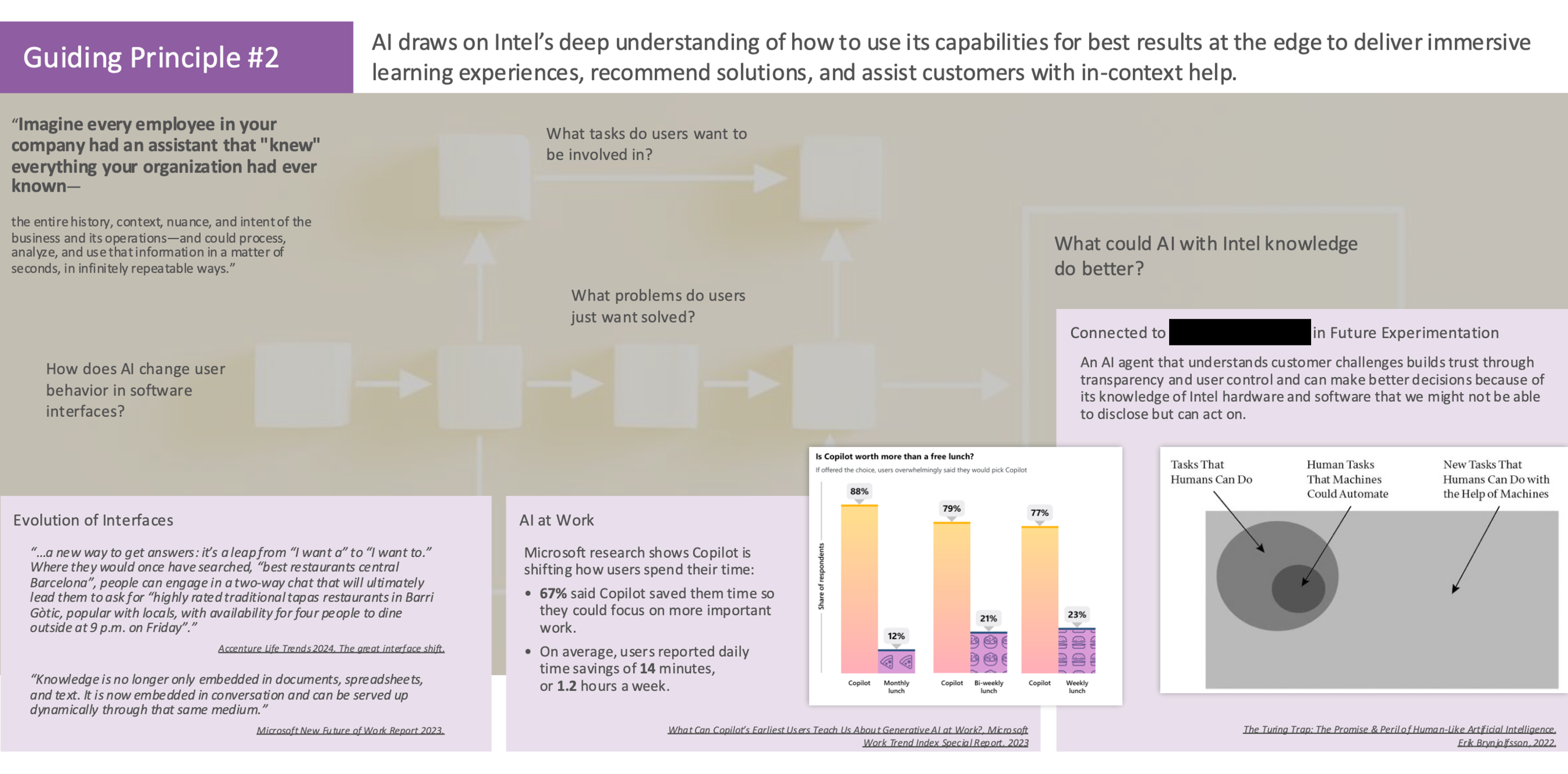
AI draws on Intel’s deep understanding of how to use its capabilities for best results at the edge to deliver immersive learning experiences, recommend solutions, and assist customers with in-context help.
Creating the Edge Platform Guide
Based on these insights, we pivoted our concept direction. The core vision became the "Edge Platform Guide," an AI-powered feature acting as a trusted teammate for developers and customers, allowing users to:
- Describe problems in natural language
- Receive custom-guided learning paths tailored to specific goals
- Get step-by-step guidance within the context of tasks
- Access recommendations based on Intel's unique expertise
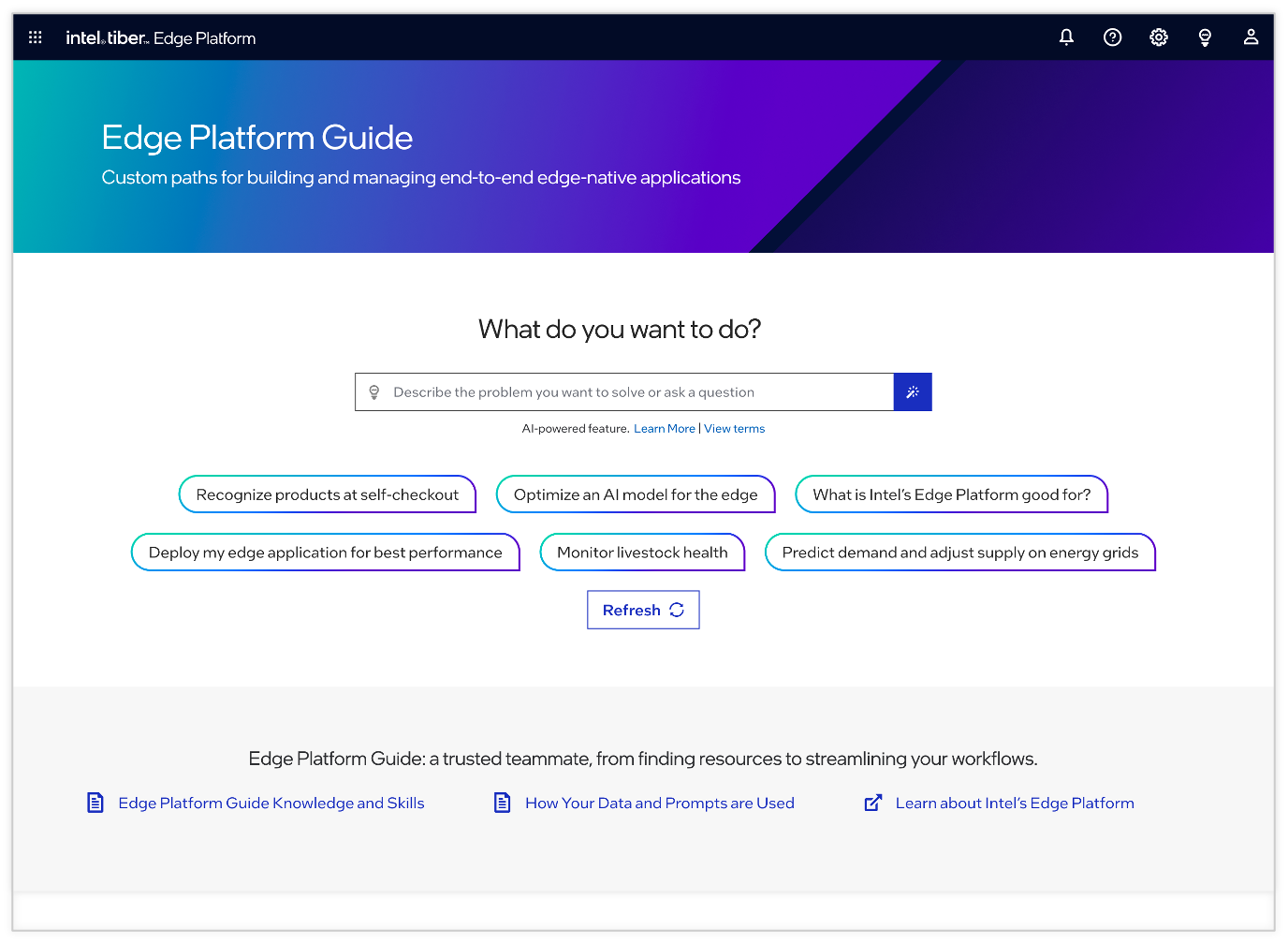
A starting point for customers to explore and get started with the Edge Platform. AI leverages its knowledge and understanding of the problem to build custom-guided experiences.
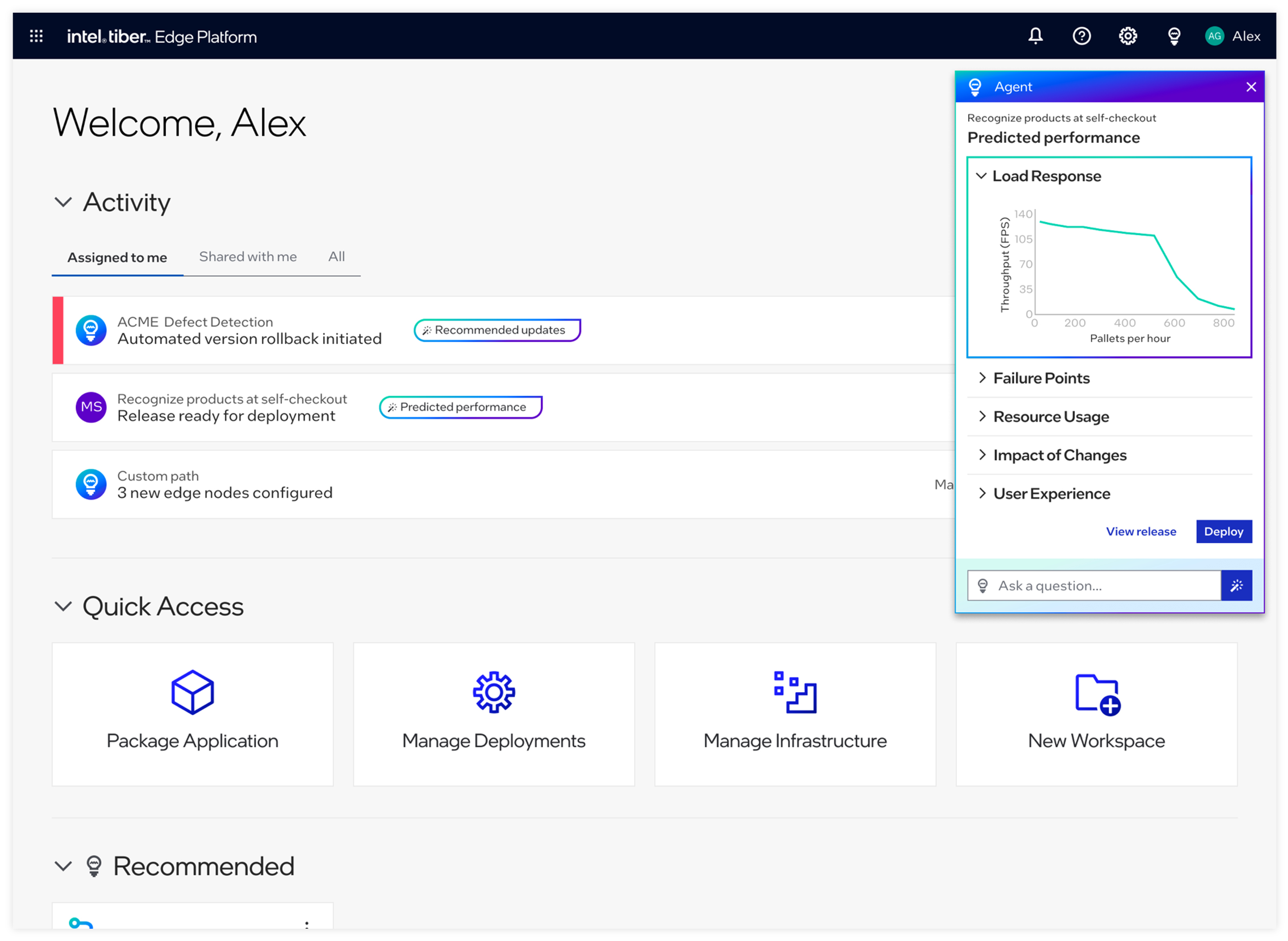
Learn what customers want to do and what they’d rather not. The agent can play multiple roles. From providing insights to streamlining workflows. Users can leverage AI’s capabilities as it fits their working model.
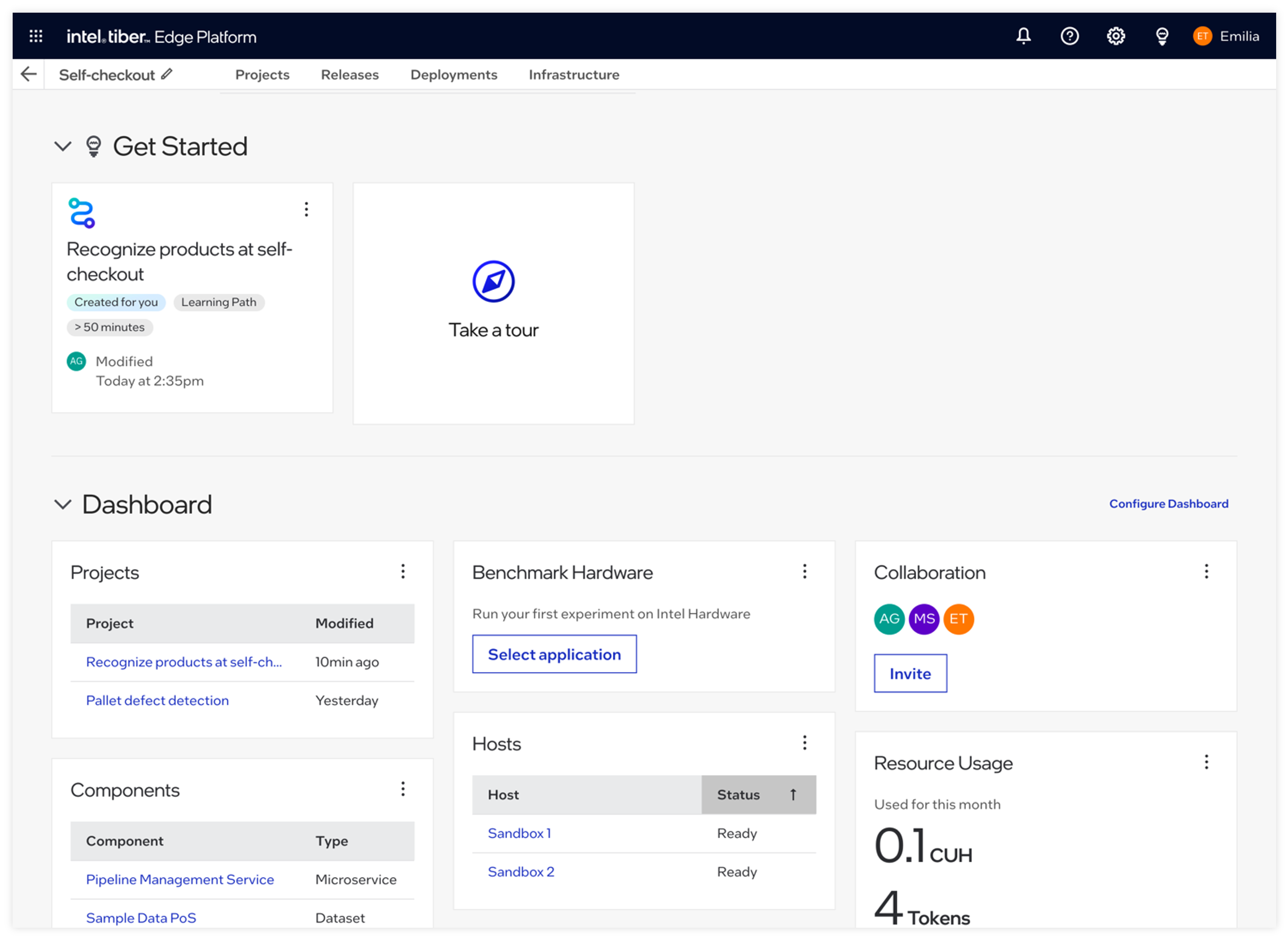
Workspace dashboards consolidate activities across products for a platform perspective in alignment with development and deployment workflows and collaboration within a team or across ecosystem partners.
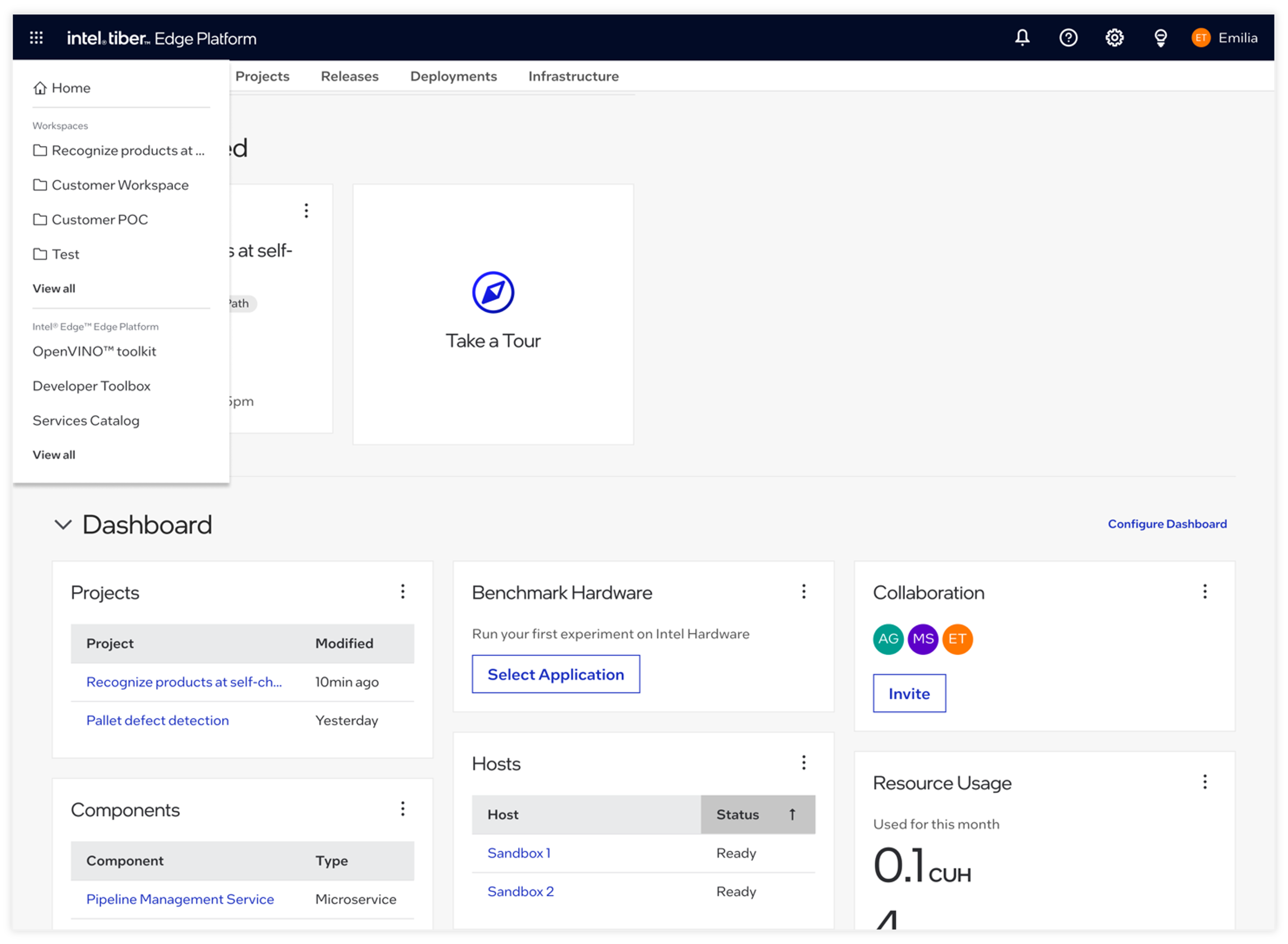
The user comes first, and our products follow. A main navigation switcher allows the user to quickly access workspaces and their platform Home. Shortcuts to products are also available.
A model for software strategy and developer engagement
Building organization-wide support
To engage product teams who owned individual Edge Platform components, I ran input sessions using the "I Like, I Wish, I Wonder" framework. This structured approach gathered diverse perspectives and built initial buy-in across the organization.
I collaborated with managers, Finance, and Operations to translate our vision into a concrete 5-year plan with necessary investments. We connected our work with existing Intel-wide projects for software business transformation and future web experiences, resulting in a cross-organization initiative.
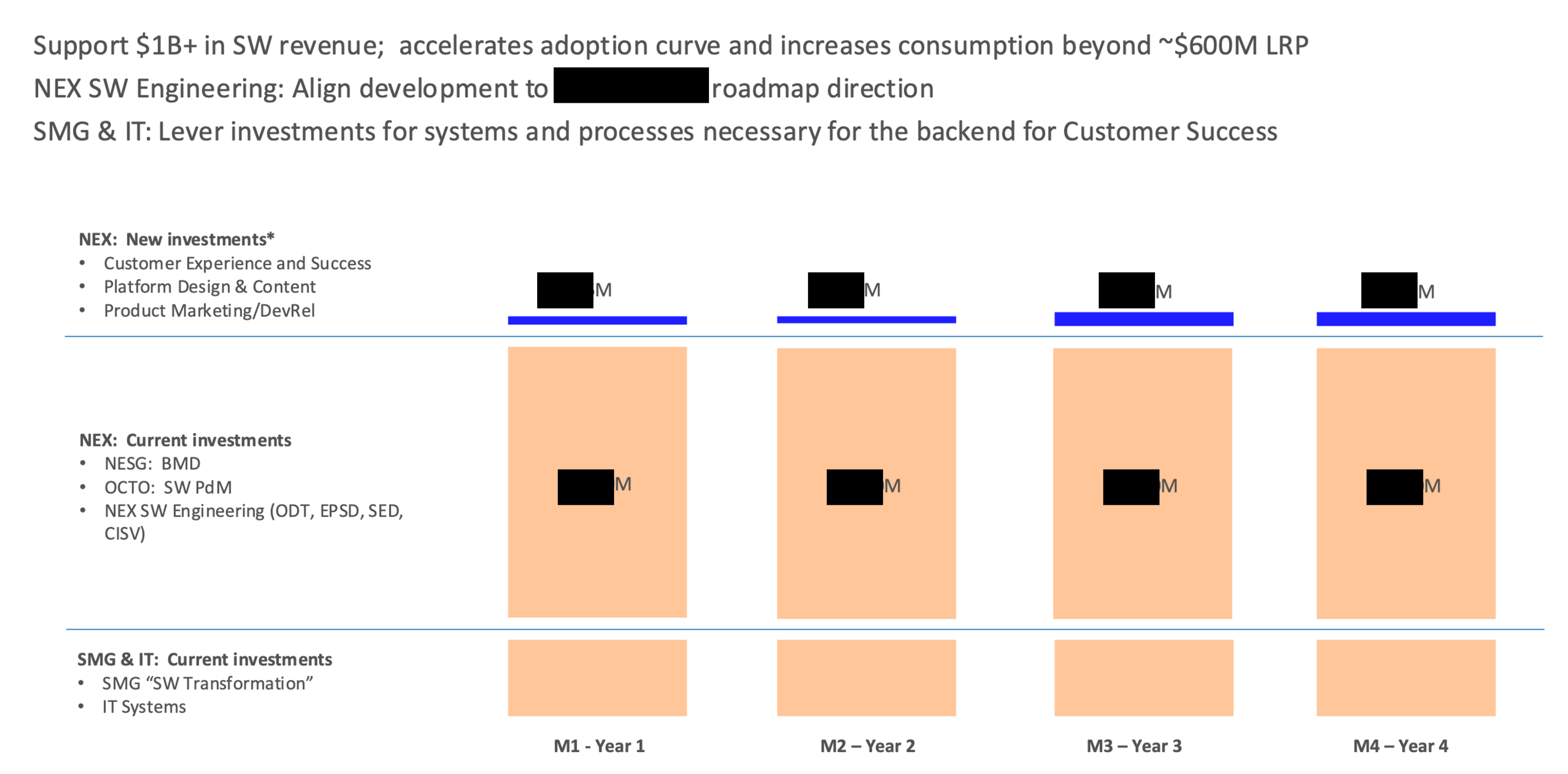
I worked with leaders across the organization to understand and communicate to executives what could be leveraged and what would be new investment.
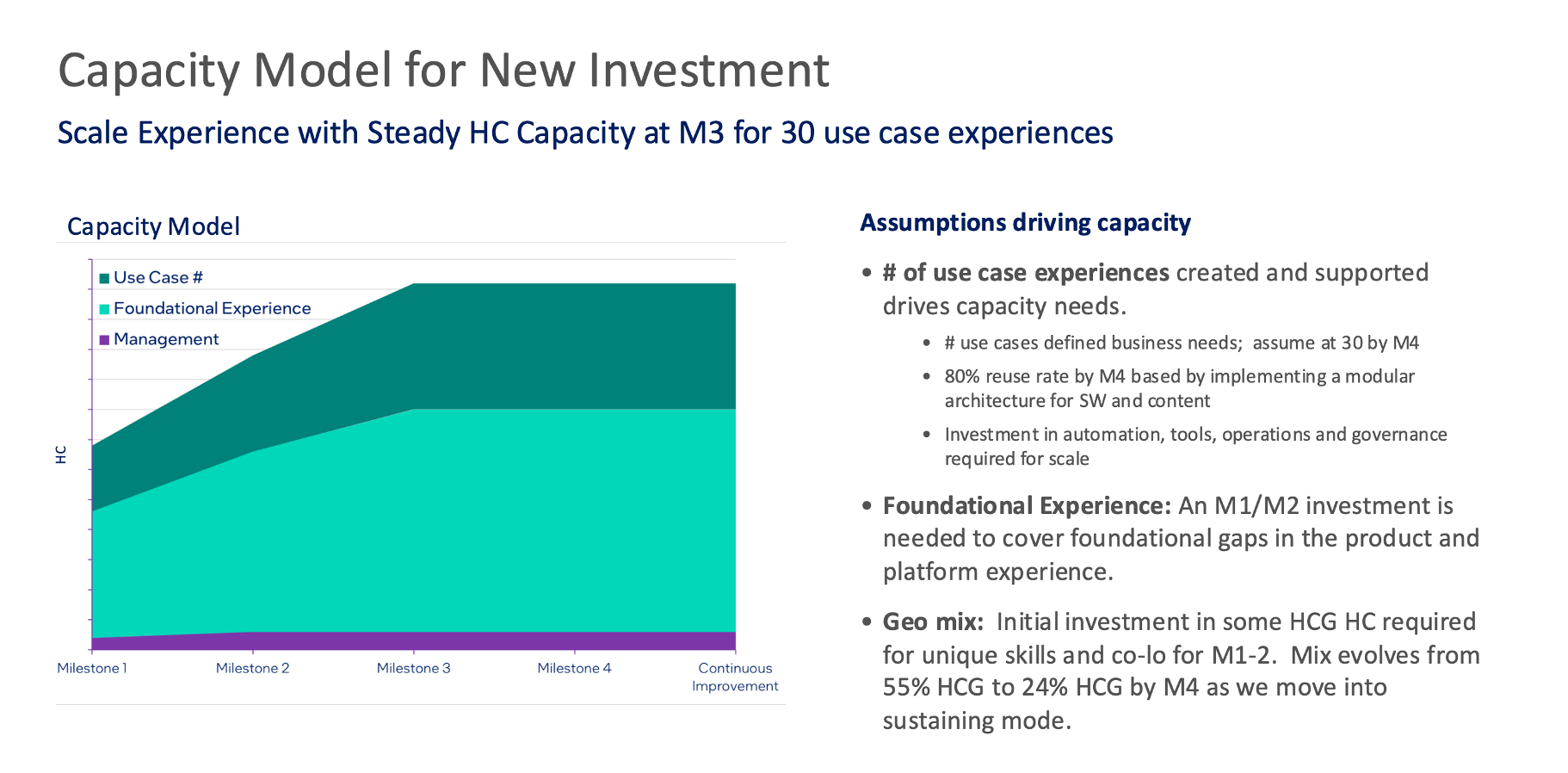
With cross-functional management and finance we developed a capacity model for predicted growth and continuous improvement.
Impact and outcomes
The vision gained executive approval and became a model for Intel's software go-to-market strategy with projected business impact supporting over $1 billion in software revenue through accelerated developer adoption.
While later corporate strategy changes prevented implementation, achieving this level of strategic alignment for an innovative multi-year vision in a large organization was a significant accomplishment.
What I learned
- Start with leadership alignment: no vision succeeds without clarity and executive buy-in from the beginning.
- Lean on research-driven innovation beyond current solutions: industry parity isn't competitive advantage, especially in fast-moving tech markets.
- Show and tell: make the vision clear with prototypes, presentations, storyboards.
- Employ structured stakeholder engagement: frameworks like "I Like, I Wish, I Wonder" direct feedback and build shared ownership across teams.
- Translate vision into concrete plans: executives need investment details, timelines, and clear resource requirements to make decisions. Teams need a breakdown of the path and evolving success metrics to deliver the experience vision.